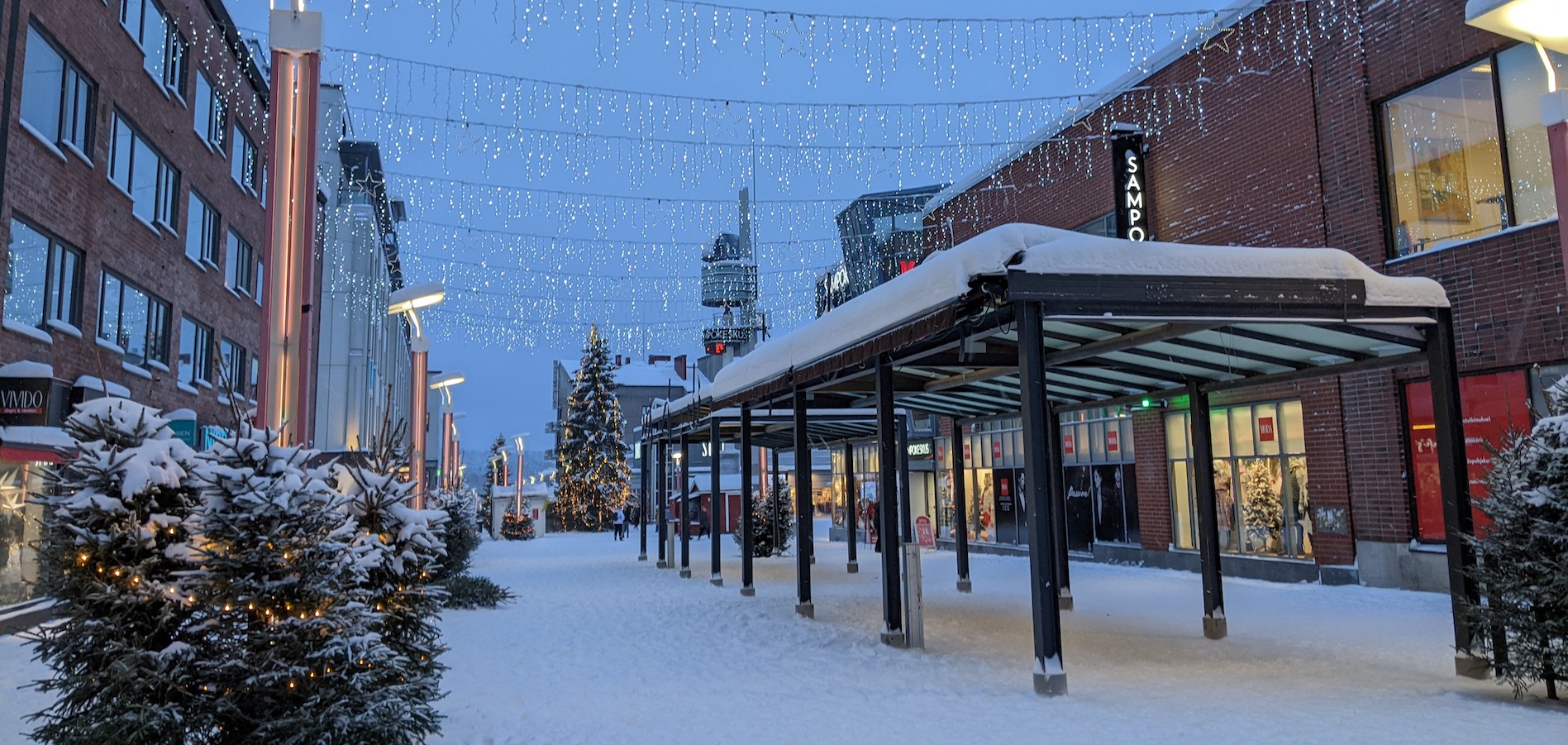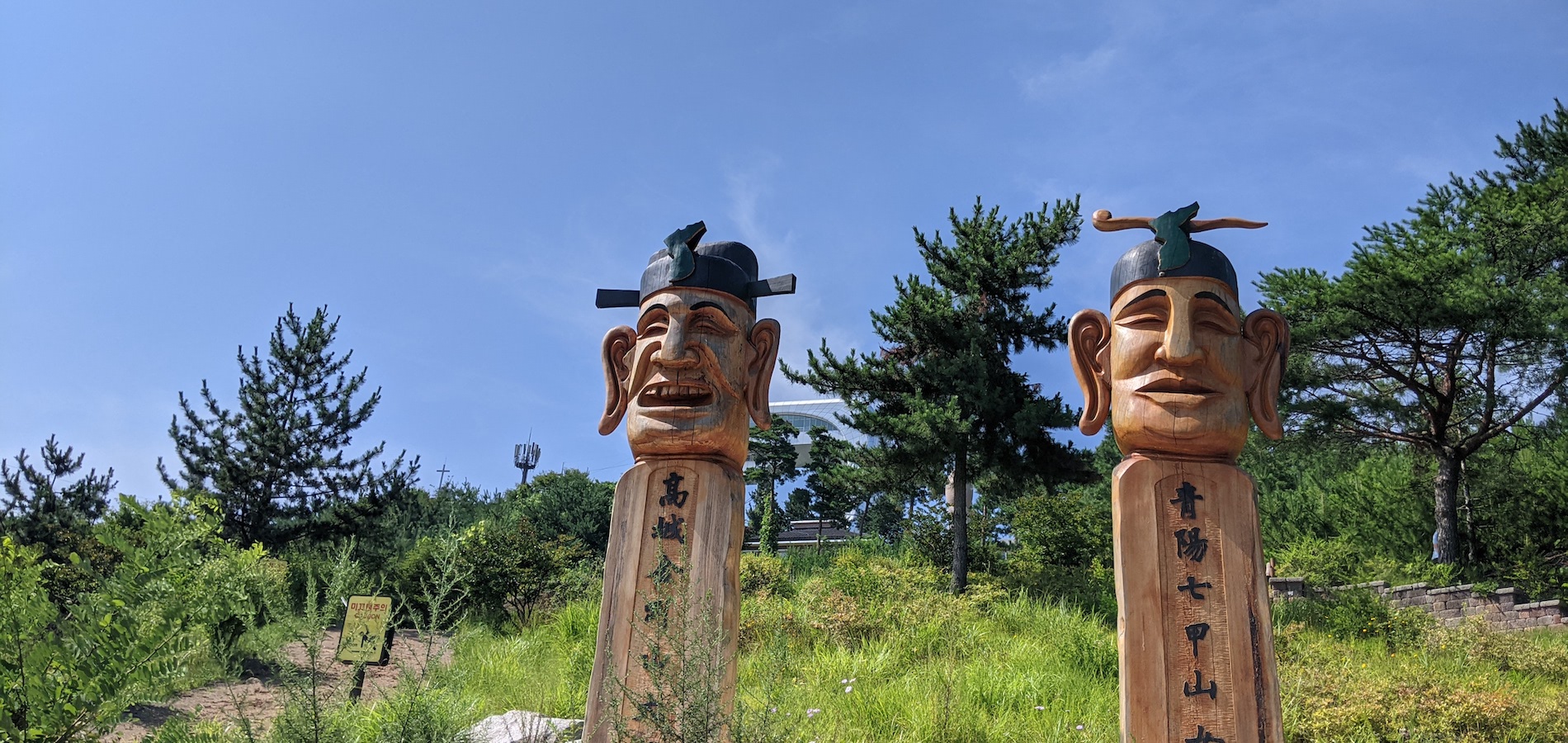Welcome
Thanks for visiting Expat Heather! I’m an international educator, writer, and expat mom currently living in South Korea. On this site you’ll find things about living abroad, teaching in international schools, travel, hiking, and expat life.
If you’re a high school student deciding what to major in, a college student looking for a career to jump into, or a teacher looking to move abroad, follow these steps to start an international teaching career.
Get Qualified and Certified
Most international schools require at least two out of three of the following: a Bachelor’s degree from a recognized institution, a valid teaching certification in the subject area you’d like to teach, and a minimum of two years full-time K-12 experience. Although you may find a job without a teaching certification, more doors will be open to you and salaries higher if you get certified. In the United States, teacher certification procedures vary from state to state. They usually require post-graduate level training and observation. In some states, like Massachusetts, you can get a 5-year preliminary teaching license after completing a series of examinations in English proficiency and your subject area.
Get Experience
Some international schools will hire fresh graduates, but many prefer 2 or more years of experience. International experience and travel is a plus. Think about what type of curriculum you’d like to teach. International schools generally offer either American, British (GCSE) or International Baccalaureate (IB) programs.
Join a Placement Company
Many schools prefer to hire through placement companies such as International Schools Services (ISS) or Search Associates. These companies provide a database of both schools and potential candidate, and they also arrange hiring fairs around the world. You will need to pay a fee when you apply, and be sure to apply only if you meet the company’s requirements. Once accepted, you will have access to information about international schools, the salary packages they offer, and current vacancies.
Set up Interviews
You can contact international schools via email in the hopes of setting up interviews. Many administrators prefer to interview candidates face to face, but some will do interviews over phone or internet based called. The best way to get interviews is to attend a recruitment fair sponsored by your placement company. Your application fee generally covers the cost of admission to one fair, but you must secure an invitation well in advance for the fair you’d like to attend. For example, in January 2009 in Bangkok there will be a Search Associates fair at the Royal Orchid Sheraton. 90 schools and 400 candidates will meet for the purpose of schools filling vacancies.
Do Your Research
As a candidate, you need to do your research. Know about the different curriculum options as well as information about the countries and schools you’d like to work in. Read about culture, cost of living and travel information. Join an online expat forum to read about other expatriates’ experiences in different cities around the world. Pay for a $29 yearly subscription to International Schools Review to see what other teachers are saying about the schools you’re thinking of applying to. Recruiters want to hire candidates who are conscientious and well informed about the curriculum, the school, and the host country and culture.
All the best to you as you consider a career in international teaching!
There are no less than seven classes available in the passenger cars of Indian Railways, and it can be a bit confusing to know which class is the one you want. Read on to find out more about each class and compare the prices between them. We’ll start from the most expensive and move to the least expensive.
First Class AC (1A)
First Class AC (pictured in image above) is the cream of the crop. It offers the most space and the most privacy, but can cost double the amount of AC-2-Tier. There are two-bed and four-bed lockable compartments, but when you reserve seats you can not specify which type of car you’d like to be in. If you are traveling as a couple, there’s a good chance you’ll get a two-bed compartment, but you shouldn’t count on it.
This class is offered only on the nicest trains. A ticket from New Delhi (NDLS) to Mumbai (BCT) on the superfast Punjab Mail train has a base fare of 2605 rupees. Add 35 rupees for the reservation fee and 50 rupees for the ‘superfast’ fee, and you come up with a grand total of 2690 rupees ($55).
First Class (FC)
First Class non-AC used to be what First Class AC is today. They are being slowly but surely phased out, and if you buy a ticket for FC you will be disappointed. The setup is the same as First Class AC, with two-bed and four-bed lockable compartments, but the compartments are dirty and many times abandoned. You may even show up to the train station and find that the First Class car you booked isn’t even attached to the train.
It’s tough to find fares and tickets for first class anymore, so in the words of an Indian Railways Conductor, “First Class, forget about it!” The fares, if they exist, are slightly less expensive than First Class AC and more expensive than AC 2-Tier.
AC 2-Tier Sleeper (2A)
Being an AC car, these cars are nicer than the regular First Class non-AC cars. They are made up of 2-tier bunks and all passengers are provided with linens. There are no lockable compartments, but you will usually be sitting with a group of four people sharing two benches. The two benches then convert into four bunks for sleeping.
A 2A ticket on the superfast Punjab Mail train from New Delhi (NDLS) to Mumbai Central (BCT) has a base fare of 1538 rupees, plus 25 rupees for reservation and charges and 30 rupees for the superfast charge. That makes a grand total of 1593 rupees ($32.57).
AC 3-Tier Sleeper (3A)
AC 3-Tier cars are similar to AC 2-Tier cars. The only difference is that there are three bunks instead of two in each section. This means that you have less space to move around while sleeping and that there are three people sharing one bench while seated. Linens are provided and AC 3-Tier cars are still nicer and cleaner than the old First Class non-AC cars.
On the same train, the Punjab Mail from New Delhi to Mumbai Central, a ticket on 3A will cost you 1109 base fare plus 55 rupees in charges. The total will be 1164 rupees ($23.84).
AC Chair Car (CC)
AC Chair Cars are the nicer non-sleeper cars. Some trains are superior to others. The lower the number, the nicer the train usually is. AC Chair Cars are made up of rows of chairs and are found on shorter routes. As there is no option for the AC Chair Car from New Delhi to Mumbai Central, let’s look at the fare for the shorter route from New Delhi to Amritsar. On the NDLSASR (New Delhi to Amritsar) Express, the total ticket cost is 438 rupees ($8.90).
Sleeper Car (SL)
A regular non-air conditioned Sleeper Car is the cheapest way to travel with a bed. These are not as clean as AC cars, and solo women may want to consider sleeping in an all women’s car in order to avoid unwanted bedfellows during the journey. A ticket on the superfast Punjab Mail train from New Delhi to Mumbai Central goes for 434 rupees ($8.87). Compare that to the cost of First Class AC! You will get to your destination in the same amount of time but certainly not the same amount of comfort.
Second Sitting (2S)
Second sitting is basically the unreserved non-sleeper class. You are not guaranteed a seat on the stiff wooden benches, and you may have to jostle for one. It is by far the cheapest way to travel, but you may feel claustrophobic if you’re not used to traveling in the fashion of India’s masses. There were no 2S tickets available from New Delhi to Mumbai, so we’ll compare this option with the AC Chair Car. Both of these options do not offer a bed, but only a seat. Well, a seat if you can get one in 2S! A ticket on the NDLSASR Express costs only 123 rupees total from New Delhi to Amritsar ($2.52).
With the increase of terrorist attacks worldwide and the threat of natural and economic disasters, it’s important to travel with basic safety items. Be smart and safe while traveling by always carrying a travel emergency kit on your person.
Finances
Always carry some cash on you, preferably enough to buy an alternate plane ticket in case of an emergency. Not all transportation companies accept credit cards, and plastic won’t be very useful in the wake of a global financial meltdown. It’s good to carry cash in two different internationally accepted denominations and to have small bills that you can use if you need to ‘tip’ someone along the way. Carrying a small supply of gold coins is another wise move. Make photocopies of all of your credit cards. Keep one copy with you and leave one copy at home.
Hygiene
Getting stranded in an airport, bus station or random town 100 miles from anywhere is never any fun. It’s worth getting travel size hygiene items such as toothpaste, soap, and shampoo. Carry a toothbrush, at least one washcloth, and a roll of toilet paper if desired. Women should always travel with sanitary supplies or have a reusable sanitary device, such as the Moon Cup or Keeper, on hand.
First Aid Kit
Keep a basic first aid kit in your carry-on or purse. Include latex gloves, Band-aids, gauze, safety scissors, prescription medicine, antibiotics, laxatives, painkillers, and anti-diarrheal medication. It’s also good to have chapstick, sunscreen (bring the stick kind if you are going by plane) and a small bottle of Aloe Vera gel in case of sun exposure.
Emergency Items
Take some matchbooks and put them in a plastic box or bag. Note that you generally cannot travel with strike-anywhere matches on airplanes. A few long-lasting candles and a small flashlight with extra batteries can help provide light during a blackout. If you are going to an area where there is a high-risk of kidnapping, crime or natural disaster, wear a whistle around your neck. It is best to conceal the whistle under your shirt so as not to draw attention to it. A hand crank radio cum light and two-way radios are also essential items to have in your travel emergency kit. Bring at least two bottles of water and water purification tablets.
Clothing
Always keep a change of clothes in your carry-on bag. To increase the amount of clothes you have with you while traveling, wear layers on the day of your trip. This saves space in your bag but still ensures that you have adequate clothing in case of a delay or emergency. Roll up an extra shirt, pair of underwear and socks in your bag if you don’t have space for anything else. Wear shoes that are comfortable and easy to walk or run in.
Paperwork
Always keep copies of your passport, travel documents and identification documents with you. Do not keep them in the same place as the originals. If you have a concealed money belt that you wear on your person, keep a copy of your passport in there so that it is always on you in case of an emergency. Have a sheet of paper with important phone numbers listed on it placed inside your wallet or money belt.
Although the risk of encountering an emergency during travel differs form place to place, it is always best to be prepared by carrying a basic travel emergency kit.
(Feature Photo by D Sharon Pruitt)
Several travelers have asked me about the availability of over the counter and prescription drugs in Pakistan. Pharmacies are easy to find in urban areas, and both over the counter and prescription medications are available without a doctor’s prescription. A visit to the pharmacy is quick; there is no need to drop off a prescription list to be “filled” and have to come and pick it up later. Medication in Pakistan is also much cheaper than in the United States or Europe.
Many times the brand names of medications are different in different countries. When go to the pharmacy, bring the generic name of the drug with you. The men working in the store should be able to help you find what you need. You can buy pretty much anything you may need at the local pharmacy. Read on to learn about the brand names of drugs you may need as well as great local remedies.
Cough and Cold
The one thing that I’d suggest bringing along with you would be Nyquil and Dayquil. There isn’t anything quite as strong or effective available in Pakistan. Sometimes you can find Nyquil and Dayquil in import stores (Essa Jee’s in Lahore or various shops in Islamabad), but it’s very expensive.
Local pharmacies have CofCol to ease cold symptoms. It is available in liquid form or in chewable tablets. Some pharmacies carry Coldene, which I have found to be more effective. The best local treatments for a sore throat are Strepsils cough drops (yellow is my favorite flavor) and Joshanda herbal tea. Joshanda is a local remedy that soothes a sore throat. I’ve never had anything like it; and I’ll surely be bringing a big box back to the states with me!
Locals are likely to suggest you take antibiotics, but if you’ve got a common cold there is no need for them. You can pick up vitamin C chewable pills to boost your immune system.
Allergies
Zyrtec used to be available in the markets, but it disappeared in 2009. You can buy Rigix instead, which is the same generic drug. Claratin is sold under the brand name Victrin, and it is a bit more expensive than Rigix. I was prescribed Zyrtec in the U.S., and now I pay thirty times less for it here in Pakistan. Yes, thirty times less, and now I don’t have to go to the doctor every six months (with a $35 co-pay) just to get a new prescription written.
PMS & Pain Medication
The best locally available herbal treatment is Oil of the Evening Primrose Capsules. There are different brands, one is local and costs 250 rupees ($3) per bottle. Others can sell for as much as 1650 rupees, so be sure to check the price before buying. Common painkillers available are Brufen (IB Profen), Disprin (Aspirin), and Panedol.
Birth Control
Only one type of birth control pill is locally available. It is a low-dosage pill marketed as Famila. Due to government subsidies, it is super cheap. For just 30 rupees (37 cents), you can have a 3-month supply. Be careful when you visit the pharmacy, as the men working there may be a bit clueless when it comes to birth control. Once when I asked to see birth control pills, the men took out 28 packets of the morning after pill!
Condoms can also be purchased at pharmacies. There are local brands and imported Durex condoms. If you need to buy them, it’s best to send a man in to the store to make the purchase.
Other Health Care Needs
You’ll be surprised just how much is available at a local pharmacy in urban Pakistan. If there’s a certain medication that you have from home that you want to purchase, just bring in the empty bottle and ask the men at the pharmacy to try and find its equivalent. You can also buy instruments such as glucometers ($27) right at the pharmacy. Many Pakistani pharmacies in major cities are open 24-hours a day. Since prescription drugs are available without a doctor’s note, it is important to be careful when self-medicating. Be sure to consult a doctor for your health care needs in Pakistan.
One of the things about the Azores that makes it such an unbelievable travel destination is the fact that the islands have not yet been really developed for tourism. The only tourists you’ll see are busloads of Germans or Portuguese from the mainland, and they mostly stay on the main island of Sao Miguel (Saint Michael). Aside from a stray backpacker or sailors at Horta, Faial, you’ll feel like you have these islands all to yourself to discover.
When it comes to accommodation, you basically have five choices: hotels, hostels, apartments, guesthouses, or rooms in private homes.
Hotels
Aside from on the main island of Sao Miguel (Saint Michael), you’ll be hard pressed to find many hotels. Look in the major cities on each island to find a hotel to stay in. Cities on other islands that have at least one hotel are Madalena (Pico), Horta (Faial), and Velas (Sao Jorge). Hotels will be your most expensive option. Tour groups are likely to block off rooms in Ponta Del Gada (Sao Miguel) during the summer.
Hostels
Hostels are dorm-type accommodation great for backpackers and young people. They don’t have quite as many rooms as hotels, but they have more rooms than guesthouses or private homes. Bathrooms are usually shared. In Portuguese, hostel is hospedaria.
Apartments
Known locally as apartamentos, apartments can be rented for as little as one night on the islands. This option is great for families or those who want to do their own cooking. Eating out isn’t cheap in the Azores, so self-catering is a good option for budget-minded travelers.
Guesthouses
In Portuguese, guesthouse is casa de hospedes. These properties have a bit more of a family feel to them and may offer breakfast along with the nightly rate. They are likely to have shared bathrooms, whereas apartments will have private bathrooms.
Rooms in Private Homes
Rooms in private homes are by far the most common and most affordable option in the Azores. Mothers may rent out their children’s bedrooms after the kids have grown up and left for college in the US or in Portugal. You will find that Azorean families are very hospitable. Rooms in private homes vary greatly, so it’s best to see the room before you make any commitments. Some room rates may include breakfast, use of the kitchen, or even free-flowing homemade wine! In Portuguese, this type of lodging is called alojamento particular.
For more information, see the Regional Directorate of Tourism of the Azores (www.drtacores.pt) for a current list of apartments, guesthouses, hostels and rooms in private homes. You can pick up the list of lodgings at any Tourist Office on the islands, or you can request it by emailing acorestourismo@mail.telepac.pt.
You can call different properties ahead to get rates and inquire about availability, but bear in mind that most people will not speak fluent English. As there are not herds of tourists flocking to the Azores islands, you can plan on just arriving at an island, getting the current list of lodgings from the Tourist Office, making a few calls to get rates and finding your way to your choice lodging.







Recent Comments